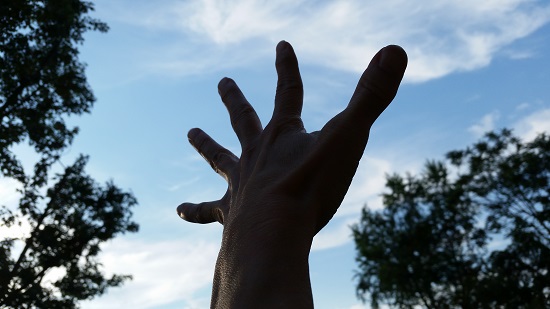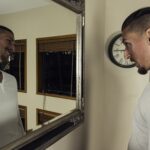The hell I’ve been through for 21 months to remain abstinent from alcohol, struggling not to relapse, didn’t have to be?
Charles O’Brien, M.D., Ph.D., spoke on the Modern Treatment of Alcoholism last night at the Virginia Tech Carilion Research Institute (link is to video; no sound until 12:28).
 I’ve reviewed some of O’Brien’s research this morning. If I understand his approach, this is what should have happened when I discovered I couldn’t stop drinking:
I’ve reviewed some of O’Brien’s research this morning. If I understand his approach, this is what should have happened when I discovered I couldn’t stop drinking:
I would have contacted my physician. I would have been prescribed in-patient detoxification. In detox, I would have been cleansed of the substance and eased through withdrawal symptoms.
Because “protracted brain changes and the [addiction-] associated personal and social difficulties put the former addict at great risk of relapse,” when I was released from detox, I would have been prescribed anti-craving medication and psychotherapy, i.e. traditional talk therapy.
I would have been given a DNA test (maybe “should” is a better word – the test has not yet been approved by the FDA) for the presence of the µ opioid receptor. If I had the mu-opioid receptor genotype, I would have been prescribed opioid receptor antagonist naltroxene hydrochloride for relapse prevention and ease of suffering during abstinence. With that genotype, I would be “expected to have a superior response to naltrexone.”
If I did not possess that genotype, my physician would have selected a medication that has “shown efficacy in combination with behavioural therapy” among them”agonists (including partial agonists), antagonists and anti-craving medications,” perhaps acamprosate. I possess protective factors in favor of compliance, i.e. I would have taken my meds as prescribed.
Added 10/4/2014: Or, if I had trouble remembering to take pills, I might have been given an injection of Vivitrol, a one-month extended release form of naltrexone.
“Modern neuroscience, informed by animal models and human brain imaging, shows that the addiction remains despite the absence of the drug, because addiction is a physical change in the brain, similar to an over-learned, long-term memory. We know some but not all of the circuits involved. When the detoxified patient is released from hospital or prison, even when months or years have passed since the last dose of the drug, the sights, sounds and smells previously associated with the drug environment activate reward circuits and evoke intense drug craving. The majority of patients relapse to compulsive drug taking soon after leaving the protected environment of the treatment program.”
– Charles P. O’Brien, M.D., Ph.D.
I would have been cautioned to monitor people, places, things and internal states because they can trigger craving in brain substrates, straining the anti-craving effect of the medication I would have been taking.
My addiction to alcohol would be considered a chronic condition for which I would need long-term treatment.
That’s what could and should have happened for my addiction to alcohol? But this is all there was.
And the way to effectively treat addiction has been known since 1996?!
F*k, f*k, f*k.
I have spent almost two years in hell.
“It’s unethical not to use medications,” says Charles O’Brien, MD, PhD, Kenneth Appel Professor in the Department of Psychiatry at the University of Pennsylvania and one of the country’s top clinical researchers in addiction treatment. “If you’re discouraging people from taking medications, you are behaving in an unethical way; you are depriving your patients of a way to turn themselves around. Just because you don’t like it doesn’t mean you have to keep your patients away from it.”
– Alison Knopf quoting O’Brien
. . . . .
I wept and raged this morning after learning of O’Brien’s work. It has taken almost two years of my one, precious little life to feel almost functional again after becoming abstinent. All that angst and deep inner probing for whys and hows. I have strained and struggled and thrashed to treat myself for addiction to alcohol. I have education and resources and support and it has been complete hell. I have torn my hair watching others, less lucky than I, struggle a thousand-fold. It should NOT have to be this hard. And according to O’Brien, it doesn’t have to be. All I can do is swear.
And doggedly suit up and show up again for one of my own self-prescribed addiction treatments – exercise, whose “efficacy may be related to its ability to normalize glutamatergic and dopaminergic signaling and reverse drug-induced changes in chromatin via epigenetic interactions with brain-derived neurotrophic factor (BDNF) in the reward pathway.”
Are you f*king kidding me?! Do you SEE ME?! I am a PERSON. Help me. Help people like I am.

“People are suffering and dying,” said [Dr. Warren] Bickel, who also directs the institute’s Addiction Recovery Research Center. “They’re overdosing and need treatment, but limited funding makes it even more challenging to provide treatment. I thought we might be able to harness information technology to help people in the throes of addiction.”
http://www.vtnews.vt.edu/articles/2014/10/100614-vtc-bickel.html
Adding an Internet-Delivered Treatment to an Efficacious Treatment Package for Opioid Dependence.
Christensen DR, Landes RD, Jackson L, Marsch LA, Mancino MJ, Chopra MP, Bickel WK.
Abstract
Objective: To examine the benefit of adding an Internet-delivered behavior therapy to a buprenorphine medication program and voucher-based motivational incentives. Method: A block-randomized, unblinded, parallel, 12-week treatment trial was conducted with 170 opioid-dependent adult patients (mean age = 34.3 years; 54.1% male; 95.3% White). Participants received an Internet-based community reinforcement approach intervention plus contingency management (CRA+) and buprenorphine or contingency management alone (CM-alone) plus buprenorphine. The primary outcomes, measured over the course of treatment, were longest continuous abstinence, total abstinence, and days retained in treatment. Results: Compared to those receiving CM-alone, CRA+ recipients exhibited, on average, 9.7 total days more of abstinence (95% confidence interval [CI = 2.3, 17.2]) and had a reduced hazard of dropping out of treatment (hazard ratio = 0.47; 95% CI [0.26, 0.85]). Prior treatment for opioid dependence significantly moderated the additional improvement of CRA+ for longest continuous days of abstinence. Conclusions: These results provide further evidence that an Internet-based CRA+ treatment is efficacious and adds clinical benefits to a contingency management/medication based program for opioid dependence.
http://www.ncbi.nlm.nih.gov/pubmed/25090043
“[Medication-Assisted Treatment] MAT is the use of medications, in combination with counseling and behavioral therapies, to provide a whole-patient approach to the treatment of substance use disorders. Research shows that when treating substance-use disorders, a combination of medication and behavioral therapies is most successful. Medication assisted treatment (MAT) is clinically driven with a focus on individualized patient care.”
http://www.dpt.samhsa.gov/patients/mat.aspx
From The Fix:
“Knowing that FDA-approved anti-addiction medication works for smoking, and that anti-addiction medication coupled with therapy works even better, one wonders why the FDA hasn’t approved medication for those with alcohol use disorder? In fact, they have, and these medications are very likely the ones that your counselor or sponsor is not telling you about. In fact, the majority of the rehabs in the United States do not use any of this medication. Neither therapy methods alone nor 12-steps alone work nearly as effectively as therapy plus medication. No study in existence shows therapy or 12-step involvement to be as effective as a combined therapy and medication program.”
“The combination of acamprosate plus naltrexone and cognitive-behavioral therapy currently shows the highest rates of recovery of any system in clinical trials. This combination has been studied thoroughly over the past decade with abstinence rates reaching higher than 65%. No other program, not Alcoholics Anonymous, nor SMART Recovery®, comes close to achieving these rates of abstinence, yet hardly any treatment program in the country is engaging in this practice. It’s time health practitioners abandon personal preferences and start asking what is optimal for treatment. Engaging in optimal treatment with pharmaceutical and therapy combinations should be the first protocol used by any alcohol rehabilitation program, and only if that fails should alternative or off-label treatments be used. In light of the overwhelming evidence of the combined pharmaceutical and therapy efficacy, the rehabilitation industry’s refusal to use this protocol is puzzling at best. ”
http://www.thefix.com/content/best-treatment-alcohol-use-disorder-your-addiction-counselor-isn%E2%80%99t-telling-you
Thanks for this link, Risa:
“The BBC reports that the National Institute for Health and Care Excellence (NICE) has officially recommended the drug nalmefene (Selincro), an opioid receptor antagonist that helps kill the urge for another pint.”
http://mic.com/articles/100428/worried-you-re-becoming-an-alcoholic-there-s-a-pill-for-that